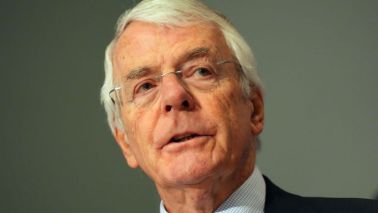Matt Hancock is the youngest of the candidates running to be Conservative leader but he’s starting to look like the grown-up in the room. At the weekend he published the outline of a Brexit plan that might just prove the basis for a way ahead that averts either economic or political disaster.
The plan, as I read it, entails accepting the Withdrawal Agreement as negotiated by Theresa May is the only viable way to avoid a No-Deal exit in October and shifting the focus of British ambitions to the Political Declaration on the future relationship between the UK and EU that would follow Withdrawal.
That’s both sensible and smart. Sensible because it accepts the hard realities that any Conservative PM who wants to stay in power has to seek a Brexit deal and avoid No Deal; the Commons and its Speaker will not permit otherwise. Smart because it might actually get some traction in Brussels, where people have been politely suggesting for some time that a conversation about the Political Declaration is perfectly possible.
Hancock says that Declaration should put the UK on course to a free-trade Deal with the EU. And he accepts that such a deal requires trade-offs: the more access you want to EU markets, the higher the price you pay in sovereignty. For that candour alone he deserves praise.
Other bits of the Hancock plan look a bit more optimistic, such as the aspiration to agree on “alternative arrangements” for the Irish border during the transition period after UK exit. But again, this suggests that Hancock has at least listened to people on the other side of the table. People like Michel Barnier, who recently gave an interview to the New York Review of Books that deserves a close reading:
‘We have found an agreement. We said that after the withdrawal agreement is accepted, we can immediately start work on a long-term solution for the Irish border. It was a British proposal to build the backstop into a UK-wide solution—to make the whole of the UK (including Northern Ireland) part of a single customs territory until we find a solution. The backstop is insurance, in case we do not find this solution.’
Q: How might such a final solution look?
It could be, for example, what we call alternative arrangements: technology, drones, invisible controls. None of these arrangements are operational today.
Q: Why can’t we agree on the alternative arrangements now?
You cannot do it immediately. They [the technologies] must be fully operational. I was the French minister of agriculture—how do you control a single cow or a truck load of pork? You need technology. You need technical infrastructure to do that. And this takes time.
Other parts of the Hancock plan look less well grounded. He promises to seek a time-limit on the backstop. That sounds like just another unicorn, though I note that my former Daily Telegraph colleague Peter Foster — who has a very fine sense of current thinking in Brussels and Dublin — reckons this is not completely impossible for a new PM.
But probably more important to the Hancock plan is what he says he’d be willing to do to avoid the UK falling into the backstop at all: extend the transition period beyond July 2020, to allow more time to find those “alternative arrangements” Barnier speaks of.
The combined effect of these ideas could still be, to put it mildly, hard to sell to a Conservative Party that has become ever-more radical over Brexit since 2016. The Hancock plan means accepting the withdrawal agreement and potentially applying EU laws until very close to the general election due in June 2022. Arguably, this was the sort of offer that Theresa May should have put forward last year when she struck her Brexit deal, and if she had, it might just have passed.
But now? As an offer to a party whose members have swallowed gallons of fantasy over the virtues of No Deal, the Hancock plan is almost recklessly reality-based. It’s certainly the closest any candidate has come to meeting the standards of realism laid down by Rory Stewart, whose campaign seems to be at least as much about reminding his party of the need to retain some relationship with reality as about actually leading the party. Whoever leads it next, the Conservative Party should regard Stewart as the angel of its better nature, a living reminder of the need to do better.
For all its merits, you’d still be bold indeed to bet on prime minister Hancock taking office next month and embarking on this plan. But that doesn’t mean it’s irrelevant. Far from it. Because there are many ways to have influence, and one of them is to have good ideas and express them well — and at the right time. Hancock has already demonstrated an ability to set the terms of the debate: his warning that seeking No Deal would likely mean an early election has become a staple of the leadership conversation.
Will the Hancock plan for Brexit likewise become the baseline for future Brexit discussion? That’s probably too much to hope for. But it might, with luck, drag the centre of gravity in an often surreal election contest a few feet back towards realism; how the frontrunners Boris Johnson and Michael Gove respond will be worth watching.
Gove is currently taking fire from Leave purists over suggestions he’d rather delay exit than fall out with no deal, but it wouldn’t be the greatest surprise in recent politics if Johnson eventually looks to conjure up some creative way of leaving with a variant of the May Deal, and a political declaration change with “alternative arrangements” would be a good place to start. Matt Hancock and his respectable Brexit plan don’t have to win to make a difference.







Comments